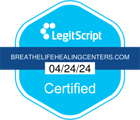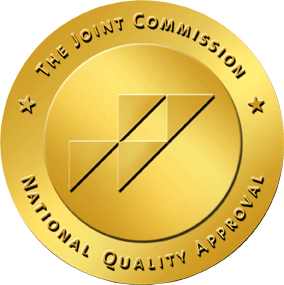Mental illness and substance abuse go hand in hand. They occur together frequently and they also tend to aggravate each other. According to the National Institute on Drug Abuse, people who have been diagnosed with a mood or anxiety disorder develop a substance abuse disorder at twice the rate of the normal population. On the flip side, those who start with a substance abuse disorder are then twice as likely to later be diagnosed with a mood or anxiety disorder (again, compared to the normal population). What comes first? The drugs or the mental illness? Why do we see this trend?
Substance abuse is considered a mental illness of its own because it changes a person’s life drastically. When we see substance abuse disorder happening with any other mental illness, we use the term “Comorbidity”. This just refers to having two separate conditions at once. The field of research dedicated to finding an answer to why substance abuse and mental illness occur together so frequently is called comorbidity research. Although it’s very clear just based on the data that some connection exists, we’re still not sure why exactly it happens. After many years of research and debate, experts have come up with 3 strong explanations. Although each model has evidence to back it up, they do not apply to every case and are difficult to prove which is why we need comorbidity researchers to keep working.
Theories
1. The first model suggests that substance abuse produces symptoms of mental illness, directly leading to a new diagnosis. This model also suggests that substance abuse causes degeneration of cognitive function that then worsens the developing mental illness. This theory, in simple terms, posits that substance abuse came before the mental illness.
2. The second explanation offers that mental illness, or at least the pre-diagnosable symptoms, cause individuals to self-medicate with drugs and alcohol. The self-medication brings initial relief but then spirals out of control into its own very serious substance-abuse disorder. An example of this theory could be a young person who’s developing some mild symptoms of anxiety starting to drink alcohol to feel calm. This young person then starts drinking every day, to get rid of the anxiety and then finds herself with an addiction. According to this explanation, the mental illness comes before the substance abuse.
3. The third theory is called the Common Vulnerability Model. It offers that there is something pre-existing in the individual that puts them at risk for both substance abuse and mental illness. Brain function, trauma and stress, and genetic vulnerabilities are common risk factors shared by substance-abuse disorders and mental illness. Some deeper issue within the patient is causing both the substance use disorder and the mental illness to develop. According to this theory, substance abuse and mental illness develop together because of the person’s unique vulnerabilities; neither truly comes first.
Most experts agree that there are likely a few elements of all three of these theories taking place causing the relationship between substance abuse and mental illness in most cases. It can be difficult to untangle the different threads connecting the two conditions, even in one individual case. Consider the following example.
A girl is born in a household with two alcoholic parents, one of which has been diagnosed with schizophrenia as well. Her childhood is strained and she has memories of abuse happening in the home. Despite her stressors, she works hard and does well in school. After beginning middle school, around the age of 11, she develops some challenges in her English class. Writing essays is painful for her and she avoids the anxiety of writing by drinking a bit of vodka stolen from her parents’ liquor cabinet. She finds that this helps her get the essays done, even if they aren’t receiving the best marks.
Next year, as her grades drop slightly, she grows more and more anxious about her performance in school. She wants to go to college but feels like it’s impossible for her. Her self-esteem plummets and the drinking happens more and more frequently. In high school, she is diagnosed with panic disorder after having a serious panic attack during an exam. She is prescribed Xanax to take only when she suspects a panic attack is coming on. However, she starts to use the prescription pills on a daily basis. When she runs out of what her doctor gave her, she buys them illegally from friends. A few years down the road, her alcohol and benzodiazepine addiction have spiraled out of control into addiction.
In this story, can you pinpoint the model that applies? It’s hard to say what caused what, but there is clearly some connection between her genetics, childhood experiences, and the interplay between her anxiety disorder and substance use.
What does all of this mean treatment-wise?
Unfortunately, having comorbid substance abuse disorder and a mental illness complicates the treatment of both conditions. Treating one while neglecting the other is likely to lead to a relapse back to the comorbid situation. Referring back to our hypothetical model, this young woman would not be able to break free from her substance abuse disorder without also addressing the anxiety. On the flip side, treatment for her anxiety disorder will be impaired, or completely impossible, if she continues to self-medicate with drugs and alcohol.
The best option for those with comorbid substance abuse and mental illness is to seek out a treatment program, like those offered at Breath Life Healing Centers, that targets both the substance abuse as well as the underlying mental health problems.














